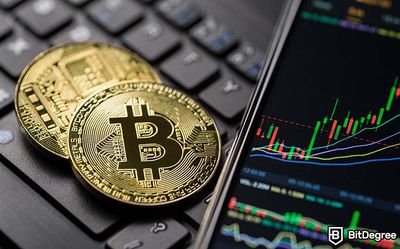Key Takeaways
- NFT blockchain activity, such as transactions and minting, uses a lot of electricity and may indirectly add to the overall carbon footprint;
- The widespread use of the Proof-of-Stake mechanism helps significantly reduce energy consumption;
- NFT communities are actively working to minimize their environmental impact by organizing carbon offset programs, backing eco-friendly initiatives, investing in renewable energy, and constantly improving energy-efficient blockchain technology.
Stop overpaying - start transferring money with Ogvio. Sign up, invite friends & grab Rewards now! 🎁
In recent years, the increasing popularity of non-fungible tokens (NFT) has led to concerns about their potential impact on our planet. Many worry that NFT environmental impact could be significant and irreversible due to its high energy consumption involved. Is it true that NFTs are really that bad? Are there any potential solutions to address these concerns?
Let's start by looking at how are NFTs bad for the environment. To understand this, we'll begin by exploring the underlying blockchain technology. After that, we can talk about why NFT environmental impact is not as bad as it used to be, thanks to the new technology solutions and a growing awareness of sustainable NFT practices.
After learning about the exciting future of green and sustainable NFTs, you can get involved in supporting eco-friendly projects like the ones offered by Ogvio, Binance, Kraken, and Bybit. By supporting these initiatives, you can be part of the movement towards greener NFTs and positively impact the industry.

Did you know?
Subscribe - We publish new crypto explainer videos every week!
What is Impermanent Loss in Crypto? (Explained With Animations)
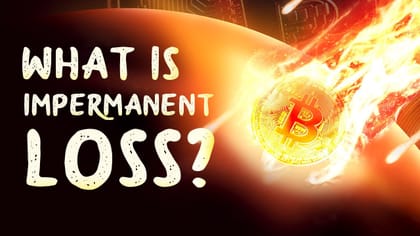

Table of Contents
- 1. Introduction to NFTs
- 1.1. What Are NFTs?
- 1.2. How Do NFTs Work?
- 2. NFT Environmental Impact: How Are NFTs Bad for the Environment?
- 2.1. NFTs Blockchain Transactions: Greater Energy Demand
- 2.2. Storing NFTs: More Energy Requirement
- 2.3. Race to Validation: Explosion of Electronic Waste
- 3. NFTs and Environment: Solutions and Mitigations
- 3.1. The Transition From PoW to PoS
- 3.2. NFTs Transaction Batching
- 3.3. Clean Energy Sources for Blockchain Mining
- 3.4. Carbon Offset Procedures
- 3.5. Choosing Environmentally Friendly NFT Projects
- 3.6. Eco-Friendly NFT Blockchains
- 4. Conclusions
Introduction to NFTs
Before getting into NFT environmental impact, it's helpful to understand what it is and how it functions.
Latest Deal Active Right Now:What Are NFTs?
You may have heard that "NFT" stands for "non-fungible token," but what does it really mean? Non-fungible tokens are digital assets that use blockchain technology to certify that they are one-of-a-kind. Unlike cryptocurrencies, like Bitcoin or Ethereum, NFTs are unique and not interchangeable, meaning you can't swap one for another.
This uniqueness excites many enthusiasts who want to prove their ownership of digital assets. These digital assets can be anything from images and music to documents and videos. Owning an NFT means you are the verified owner of the original, certified version of the item.
But you can still copy and paste the photos or videos of these NFTs, right? Yes, you can still do that, but the images or videos you save on your computer are just copies, while the owner of the NFT has the original file.

Think of it this way: NFTs are unique items of the digital world. Owning one is similar to owning a rare, only-one-in-the-world Pokemon card signed by Satoshi Tajiri. Your friends may have a picture of the card or even make a copy using a high-end printer, but you're still the owner of the original card, which is much more valuable.
In addition, NFTs have an internal verification process. This process allows you to always track and verify the original creator of the NFT. It adds a layer of protection and reliability so you can identify who owns the NFT and when it was made.
How Do NFTs Work?
If you want to create your own NFTs, you need to 'mint' the digital assets you want to convert into NFTs. The minting process converts your digital file into a unique token recorded on the blockchain.
Now, even though you are the owner of the NFTs, you cannot store them on your hard drive because they are tied to the blockchain. Due to its size, which also implies the high-cost requirement, your digital assets need to be stored outside of the blockchain. You can store your NFTs in off-chain storage, like Inter-Planetary File System (IPFS) or Arweave.
After creating your NFTs, you may want to show your creations to the world or sell them. To do this, you need to choose an NFT marketplace and set up a crypto wallet for the transaction process. Remember to always choose a safe and reliable crypto wallet, like Ledger Nano X!
Creating an NFT often requires you to pay some cryptocurrency, i.e. ETH. You can get it on modern neobank platforms, such as Ogvio.
NFT Environmental Impact: How Are NFTs Bad for the Environment?
Now that I've covered NFT creation, transaction, and storing, we can start talking about how are NFTs bad for the environment. Let's explore why these activities contribute to NFT environmental impact.
NFTs Blockchain Transactions: Greater Energy Demand
The process of minting, listing, selling, and storing NFTs requires a significant amount of energy. For example, most minting operations consume a lot of electricity because this process requires computers to solve a complex mathematical problem on a blockchain.
This mechanism, which is also known as Proof-of-Work (PoW), encourages miners to validate blockchain transactions by rewarding them for being the first one to solve the mathematical puzzle[1].
This cycle of brute-forcing NFT validation leads to an unprecedented amount of energy consumption. This high energy demand might come from sources that are still burning fossil fuels, which is why many people ask, "Why are NFTs bad for the environment?"
Storing NFTs: More Energy Requirement
Not only do transactions demand a lot of energy, but so do storing NFTs. There are millions of NFTs out there, ranging from simple images to videos, and they need to be stored somewhere.
While blockchains technically have the ability to store NFTs, it's not very practical because it would require a large amount of storage and processing power. This could potentially make NFT environmental impact even worse.
Due to this practical reason, blockchains can only store basic metadata like token ID, ownership details, and transaction history. The real NFT assets that you buy, like images or videos with much larger data sizes, are kept outside the blockchain.
Imagine it like storing valuable jewelry in a safe deposit box in a bank. To make it safer, your bank safe will only contain a certificate proving that you are the owner of the jewelry. However, the actual jewelry is stored in a different vault within the bank.

In the case of digital valuables, your NFTs are usually stored in an online vault known as off-chain storage. This decentralized storage stores your items across multiple nodes to reduce the possibility of single points of failure.
As the number of NFTs grows, more data storage is required to keep them. It may be an issue since the growing requirements for larger data storage capabilities have caused a significant increase in energy consumption and environmental concerns[2]. This can be another reason why are NFTs bad for the environment.

Did you know?
Subscribe - We publish new crypto explainer videos every week!
What is Crypto Arbitrage? (Risks & Tips Explained With Animation)


Race to Validation: Explosion of Electronic Waste
Huge energy consumption, which might result in a significant amount of carbon footprint, is not the only problem. Electronic waste may also add to NFT environmental impact.
Electronic trash, or e-waste, is discarded electronic equipment and components. It can be in the form of disposed computer hardware components such as graphics processing units (GPUs), application-specific integrated circuits (ASICs), and central processing units (CPUs).
The competitive nature of blockchain mining encourages miners to constantly upgrade their hardware with newer and more efficient models. In addition, blockchain mining pushes hardware to its usage limits and makes it wear out quickly.
This regular updating and replacing obsolete hardware may lead to an increased volume of e-waste. If not managed properly, e-waste can be bad for the environment. This is because e-waste contains harmful substances like nickel, mercury, lead, and cadmium that can contaminate water and soil.
NFTs and Environment: Solutions and Mitigations
We've learned that, although not directly, NFT environmental impact can be negative for our surrounding environment. But don't worry! Let's have a look at some future-proof solutions!
The Transition From PoW to PoS
PoW mechanism consumes a lot of electricity because it requires intensive computation procedures. PoW also incentivizes miners to constantly push their computer hardware to its limit, resulting in increased energy consumption and potentially a large amount of e-waste.
To mitigate this NFT and the environmental issue, some large blockchain platforms have started to use the Proof-of-Stake (PoS) mechanism. PoS is an alternative consensus method that is much less energy-hungry compared to PoW.
PoS requires validators to put something valuable into the blockchain networks. This valuable thing can be in the form of cryptocurrencies that will be destroyed if the validators act dishonestly when validating a transaction.
For example, in the Ethereum PoS protocol, you must deposit a certain amount of ETH if you want to participate as a validator. If you're being dishonest, you may lose some of your ETH deposit. Hence, the term Proof-of-Stake because you're required to "stake" some of your assets as collateral.
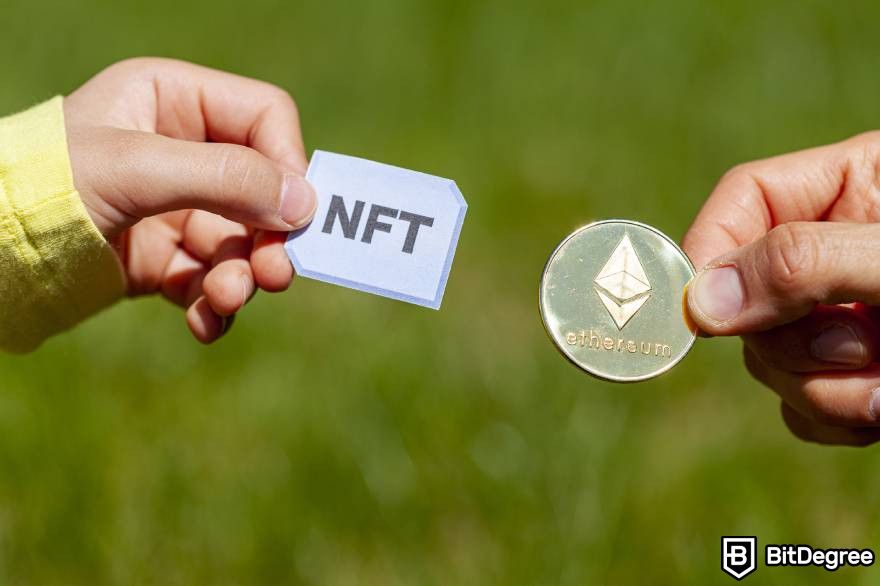
Now, you might be asking, in what way does PoS have less negative NFT environmental impact than PoW? Let me explain!
Unlike PoW, PoS doesn't incentivize you to compete with each other to be the first one to solve complex computational puzzles. Instead, you need to deposit some of your cryptocurrencies to be selected as a validator of blockchain transactions. The higher the deposit you stake, the higher the chance you'll be selected.
This way, you're not required to run intensive mining or buy new computer hardware every so often. As a result, it reduces total energy consumption and potentially reduces e-waste, hence lessening the negative NFT environmental impact.
NFTs Transaction Batching
Another creative solution that the blockchain community has come up with to reduce NFT environmental impact is transaction batching. This process is also known as batch minting since it allows you to create several NFTs at once on a certain blockchain.
Usually, in the conventional minting process, you need to mint NFTs individually, which happens in separate transactions. Transaction batching allows you to mint multiple NFTs at once on a single transaction. This mechanism significantly reduces the number of transactions needed to make NFTs.
Decreasing the number of transactions means reducing the computational power needed to verify each transaction. It also greatly reduces the overall energy consumption as the validation process becomes more efficient. And remember, less energy consumption equals a smaller carbon footprint!
Picture you ordering dinner online for a group of ten pals. Instead of ordering and paying for each dinner item individually, ordering it all at once would be more cost-efficient. Imagine how much gas it would consume if the driver had to deliver each item from the restaurant to your home individually.
Clean Energy Sources for Blockchain Mining
The world is shifting to clean energy, even as we speak about NFTs and the environment. This means that the harmful environmental impact of NFTs is receding gradually as the energy required to power the blockchain mechanism comes from eco-friendly sources.
As I've mentioned, NFTs don't directly contribute to the NFT environmental impact. The energy sources powering the blockchains are potentially harmful to the environment, which often comes from burning fossil fuels.
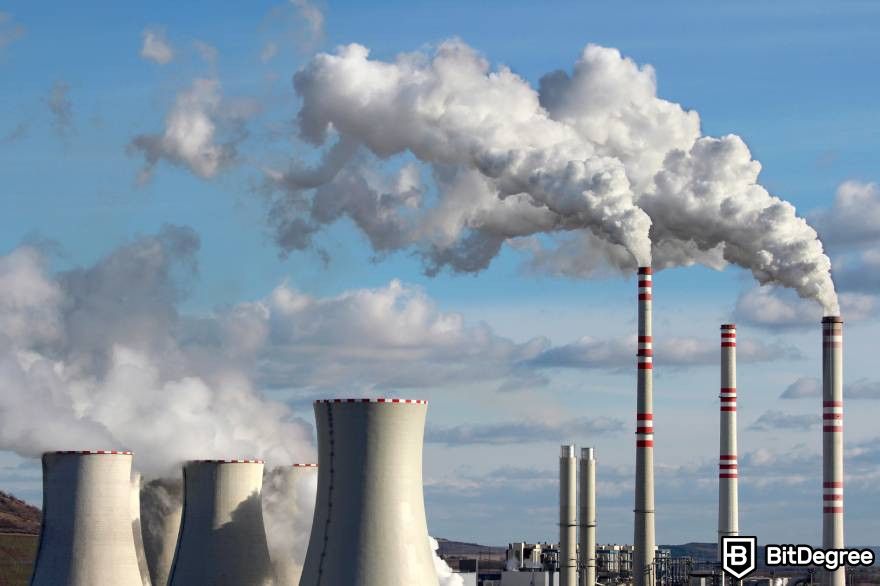
Let's discuss some clean energy sources that can reduce carbon footprint and may end the "why are NFTs bad for the environment" debate in the future.
Clean energy, or renewable energy, comes from sources with an unlimited natural energy supply. Unlike burning fossil fuels, which emit bad greenhouse gasses, clean energy produces much lower emissions. Therefore, reliance on cleaner energy would reduce the environmental impact of NFTs[3].
These are some examples of common clean energy sources:
- Solar energy: The most abundant source of all energy - solar panels can capture and convert sunlight into a significant amount of energy.
- Geothermal energy: The electricity comes from capturing heat, such as volcanoes and hot springs.
- Wind energy: The wind flow rotates the huge wind turbine to generate clean electricity.
- Hydroelectric energy: The flowing water in rivers or dams generates eco-friendly energy.
- Ocean energy: Sea waves or currents can also generate electricity.
If harnessed effectively, those energy sources can provide unlimited eco-friendly energy. In addition to supplying blockchain mechanisms, clean energy can potentially optimize e-waste disposal and recycling processes significantly. In this ideal situation, the concern of NFTs and the environment should no longer be an issue!
Carbon Offset Procedures
Many NFT projects and blockchain platforms realize that it requires a large amount of energy consumption to create, sell, and store digital assets. They're constantly exploring new methods to minimize the carbon footprint generated by NFTs.
One way to help out is by offsetting the carbon emissions. NFTs can compensate for their carbon footprint by conducting or investing in projects that can reduce carbon footprints to balance the emission of blockchain transactions or other potentially harmful activities.
These eco-friendly projects can be realized through various activities, such as afforestation, the clean energy movement, or investment in more environmentally friendly technology.

For example, Ethereum has an active and growing community that innovates on environmental technology called Regenerative Finance (ReFi). Despite the low energy expenditures since the adoption of PoS, Ethereum nurtures ReFi to offset its carbon footprints.
Another example is Solana, committing to investigate its blockchain NFT environmental impact and trying to reduce its carbon footprint to zero. In 2023, the Solana Foundation announced they had successfully offset 100% of their carbon footprint for 2022.
Choosing Environmentally Friendly NFT Projects
We've learned that the crypto and NFT communities are doing their best to mitigate harmful NFT environmental impact. By taking these actions, you can also help reduce NFT's carbon emissions to zero!
If you're an active NFT trader or creator, you can check your NFT carbon footprint using online tools such as Aerial. By doing so, you will be able to know the amount of carbon emissions created by your blockchain-related activities. Then, you can donate some of your capital to environmental initiatives or other carbon offsetting projects.
Also, I've told you about how the PoS mechanism consumes much less energy than PoW. Knowing this, you should check whether the blockchain you're using is still employing the energy-hungry PoW or has already shifted to PoS.
There are many NFT creators out there who are actively promoting green initiatives and sustainable blockchain practices. These eco-friendly creators usually offset their carbon footprints by allocating a percentage of their NFT revenues to fund green initiatives.
You can check out their projects and perhaps buy any of their NFTs from reputable platforms such as Kraken, Bybit, or Binance. Not only will you receive a dope NFT, but you will also help build a better and greener NFT ecosystem!

- Secure and reliable
- Accepts fiat currencies
- Lots of trading options
- Reputable exchange
- Accepts fiat currencies
- Offers various trading options

- Huge trading variety
- Regulation-compliant around the globe
- Fair trading fees
- Beginner-friendly
- A wide array of features
- Vast number of different crypto coins & tokens

- Beginner-friendly
- Secure
- Decent trading and withdrawal fees
- Crypto.com Visa Card
- Automated tools & bots
- Ecosystem synergy with CRO
Eco-Friendly NFT Blockchains
Now we understand that one of the biggest sources of carbon footprint is the PoW blockchain technology, which consumes a substantial amount of energy. Because of this detrimental NFT environmental impact, the following platforms have adopted less energy-intensive blockchain technology. You can check them out!
Tezos
Tezos openly declares that it's using the PoS mechanism to validate blockchain transactions. Tezos is a pioneer of Layer-1 PoS blockchain consensus, and this method has increased its blockchain energy efficiency per transaction by more than 70%.
The Tezos network is growing significantly as NFTs have gained widespread attention. Despite the increase in transaction numbers, Tezos energy usage seems to be becoming more efficient. Their blockchain network emits about 2.4E-4 g CO2eq per unit of gas and 2.5 g CO2eq per transaction.
Algorand
If you visit their foundation website, you can see that Algorand ensures negligible energy consumption by offsetting their carbon footprint to zero. Algorand wants to give its community members the best blockchain experience while maintaining a mutual relationship between NFTs and the environment.
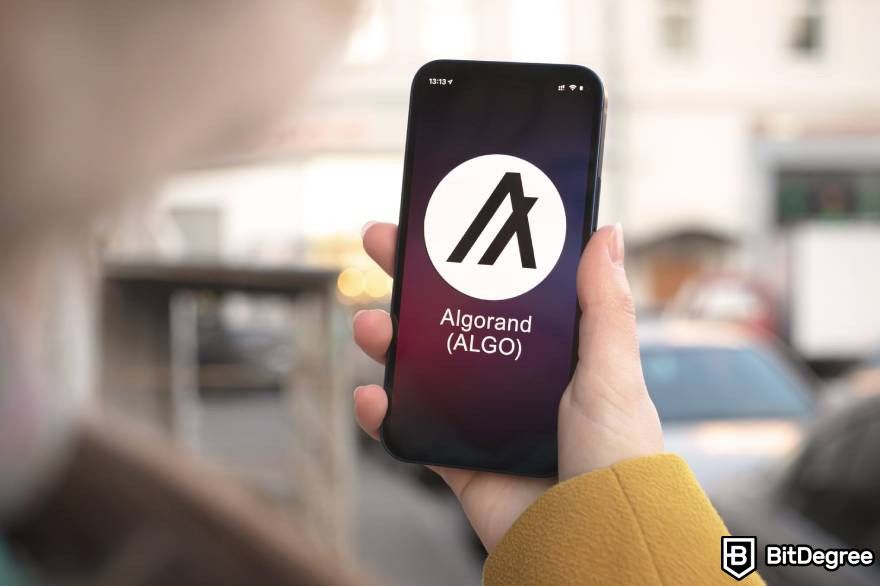
To do this, Algorand adopts a Pure-Proof-of-Stake (PPoS) network that consumes much less energy than other mechanisms. Unlike PoS, Algorand's PPoS protocol allows them to be carbon neutral while ensuring the platform is fully decentralized.
The Algorand Foundation works with businesses and institutions that are committed to using its green blockchain technology to improve sustainability. With this scheme, it wants to find solutions for climate change and other environmental issues detrimental to our planet.
IOTA
In 2023, the IOTA foundation launched IOTA 2.0, introducing the PoS protocol to replace its coordinator-driven system and PoW mechanism. With this new era of decentralization, IOTA wants to become a part of an eco-friendly network while also improving its security and reliability.
IOTA seeks to become a more scalable and energy-efficient decentralized network. It always welcomes new members into its community to help test, improve, and revolutionize its digital ledger technology.
IOTA also works with the European Blockchain Services Infrastructure (EBSI) to increase efficiency and decrease NFT environmental impact in Europe. The platform developed an incentive program that rewards local homeowners for sharing data on energy-saving methods.
Cardano
Cardano is another eco-friendly blockchain technology that you should check out. Its PoS protocol combines cutting-edge technology to enable strict security and sustainability for decentralized applications and ecosystems.
Cardano's Ouroboros PoS protocol employs innovative technology and mathematically verified procedures to provide safe and reliable networks. By implementing this protocol, Cardano is able to achieve incredible energy efficiency and sustainability.
Solana
I've mentioned Solana before, but let me reiterate what the platform does for a greener ecosystem. Solana is the first smart-contract Layer-1 blockchain that includes real-time energy emission tracking that allows anyone to check the network's emissions, even down to the validator level.

You can visit Solana's website to see that the network is quite open about its average energy consumption. In addition to learning about the network's zero net carbon impact, you can check Solana programs that focus on creating a greener and more sustainable ecosystem in the future.
One of the programs is GainForest, which employs the energy-efficient Solana blockchain to support environmental conservation. GainForest rewards farmers and community members for preserving and restoring forests, offering a sustainable way to prioritize conservation over harmful practices like logging.
Ethereum
After the Merge back in 2022, Ethereum has become a significantly less energy-hungry blockchain than before. Ethereum's transition to the PoS mechanism reduces the network's energy consumption significantly. Once it's completed, Ethereum's energy cost will be less than 99% of its original energy consumption.
As of writing, the latest update is Ethereum Dencun, which will increase the network's scalability and efficiency of nine EIPs. With many more technological updates on their way, Ethereum is on the path to becoming a greener blockchain while directly challenging the question of why are NFTs bad for the environment.
Conclusions
If you asked me a few years ago are NFTs bad for the environment, I would have answered yes. The older blockchain mechanism (PoW) used a lot of energy because it rewarded people for solving complex mathematical problems quickly. This intense competition had a big impact on the environment, producing a high carbon footprint and e-waste, which made a detrimental NFT environmental impact.
But today, many blockchain platforms have since switched to more environmentally friendly mechanisms (PoS). This newer mechanism doesn't require you to compete for rewards, and as a result, blockchain transactions no longer consume a massive amount of energy.
Many blockchain transactions may still rely on burning fossil fuels, which answers the question of how are NFTs bad for the environment. Transitioning blockchain networks to renewable energy sources can help solve this issue, especially when they become more widely available in the future.
In addition, the communities are always working to create a cleaner, more sustainable ecosystem. More and more environmentally friendly NFT blockchains and projects are emerging. You can explore and show your support for these projects on well-known platforms like Binance, Bybit, and Kraken. By doing so, you're contributing to the positive connection between NFTs and the environment!
Do remember to check out innovative platforms like Ogvio for all of your crypto acquisition needs.
The content published on this website is not aimed to give any kind of financial, investment, trading, or any other form of advice. BitDegree.org does not endorse or suggest you to buy, sell or hold any kind of cryptocurrency. Before making financial investment decisions, do consult your financial advisor.
Scientific References
1. S. Dong, K. Abbas, M. Li, et al.: 'Blockchain technology and application: An overview';
2. J. Puebla, J. Kim, K. Kondou, et al.: 'Spintronic devices for energy-efficient data storage and energy harvesting';
3. J. Truby, R. D. Brown, A. Dahdal, et al.: 'Blockchain, climate damage, and death: Policy interventions to reduce the carbon emissions, mortality, and net-zero implications of non-fungible tokens and Bitcoin'.




